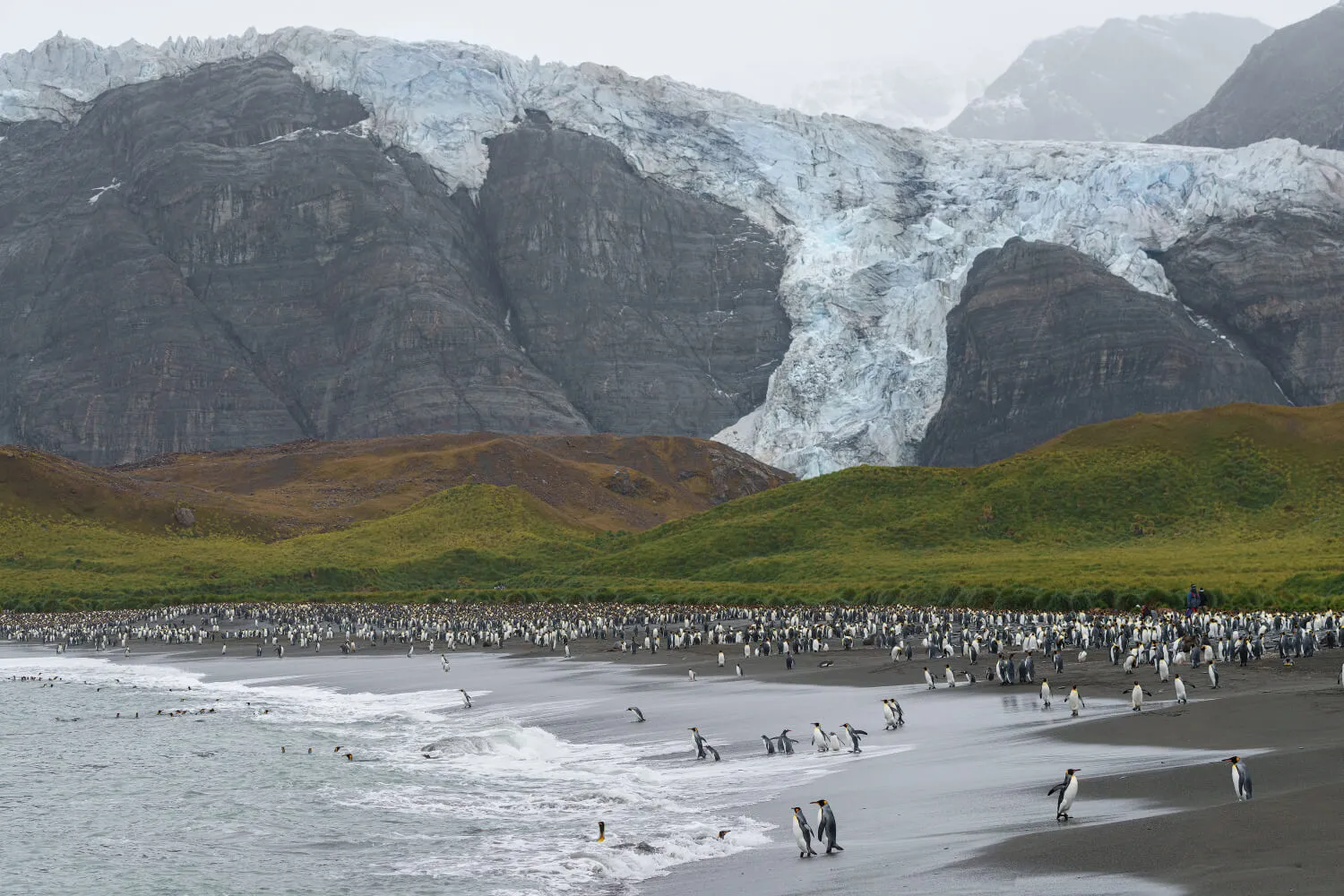

Know, appreciate, and protect the Seventh Continent.
We’ve heard it before from our guests: Witnessing the Antarctic Peninsula for the first time is like love at first sight! And we couldn’t agree more.
But as with all forms of love and appreciation, a journey to Antarctica is layered, and often travelers comment how much they leave a journey completely changed—and here’s why.
Going to Antarctica has the power to be one of the most transformative experiences in a traveler’s life. It’s one thing to see the beauty of Antarctica—and witness the continent’s towering icebergs, glacial landscapes, waddling penguins, feeding whales, and horizon-bending sunsets—but it’s another level entirely to understand how these species have adapted to this environment and why this ecosystem is perfectly created for their survival—and why the region needs our attention and care. On journeys with us, this happens in many ways. One is through our Citizen Science program, which includes learning experiences like participating in the FjordPhyto project by taking ocean measurements and phytoplankton samples to help research glacial ice melt or by sending in photos of whale tales to the Happy Whale database, where marine biologists keep track of migrating whales. Then there are lectures by our expedition team, who give insight into the science of the region and also subjects like the history of exploration in the Last Continent.
Our commitment to science extends to our ships: both Magellan Discoverer and Magellan Explorer host labs to further help our travelers participate in our Citizen Science program while giving researchers and expedition guides a place to gather samples for diverse Antarctic research programs.
The same premise frames our approach to Antarctic tourism. We want to share our passion for Antarctica with you, and we want to help you discover Antarctica in all its majestic beauty. Our hope is that you will fall in love with the White Continent and, as with all things we love, we hope that you will be moved to protect it.
Antarctic tourism has been growing at a steady pace since the early 1990s. In the 2023-2024 season, approximately 122,072 tourists visited Antarctica, with 78,848 setting foot on the continent. This number represents a significant increase compared to previous years, for a continent of 14 million square kilometers (5,405,430 square miles). In contrast, the Galápagos Islands, an archipelago of only 8,000 square kilometers (3,089 square miles), received a record 329,475 visitors in 2023. Given Antarctica's unique and fragile environment, it is of vital importance that all visitors arrive well-informed and act in ways that ensure the protection of its pristine ecosystem.A key moment in the evolution of Antarctic tourism has been the creation of the International Association of Antarctica Tour Operators (IAATO), of which Antarctica21 is a full member. IAATO has resolved to set the highest possible tourism operating standards in its effort to protect Antarctica. This effort is unique, and the challenge to maintain environmentally responsible tourism exists to this extent in no other region of the world. In fulfillment of its many objectives, IAATO works to enhance public awareness and concern for the conservation of the Antarctic environment and its associated ecosystems and to create a corps of ambassadors for the continued protection of Antarctica.
Tourism is and should continue to be a driving force in Antarctic conservation. We know that first-hand travel experiences supported by education lead to a better understanding of the destination. We know that you, as a privileged visitor to Antarctica, will be moved to protect Antarctic wildlife, respect protected areas, and keep this glorious part of our planet pristine. We also hope you will return home as an ambassador of goodwill, guardianship, and peace.
Related Articles
Experience the Extraordinary
From dramatic landscapes to close wildlife encounters, every journey to the White Continent is unique. Let's start planning yours together.















